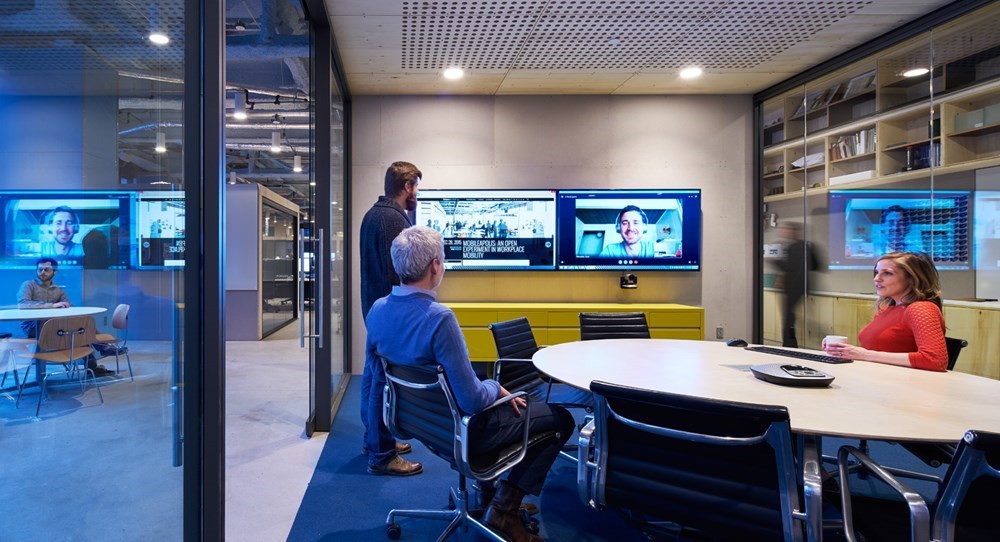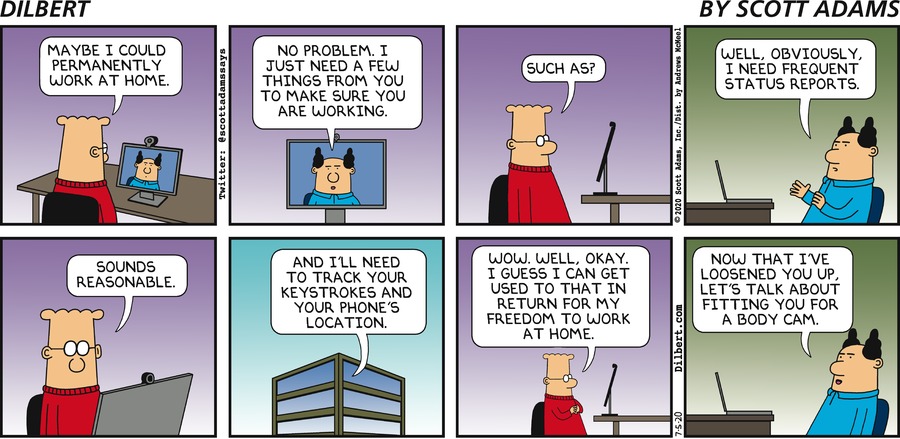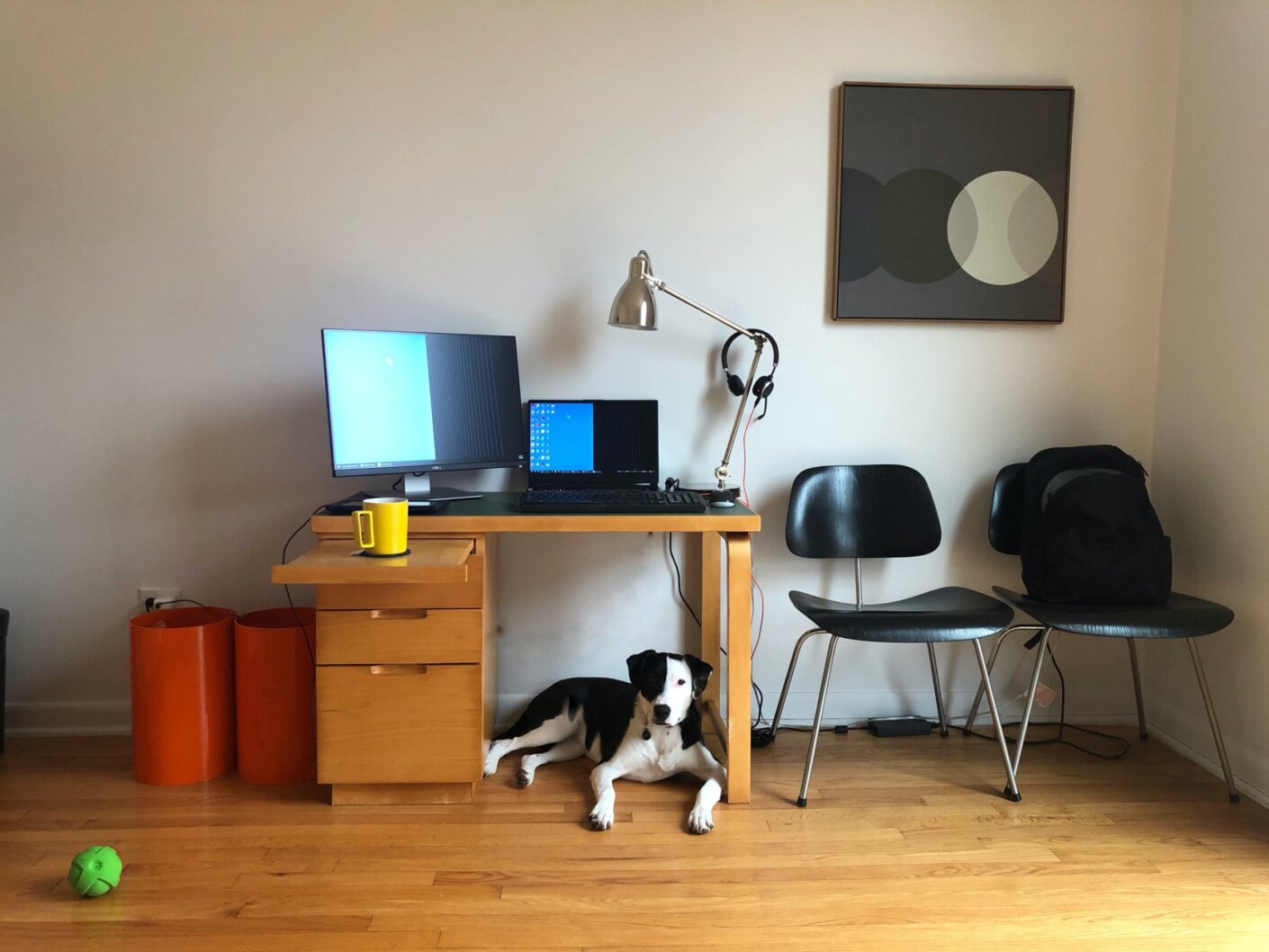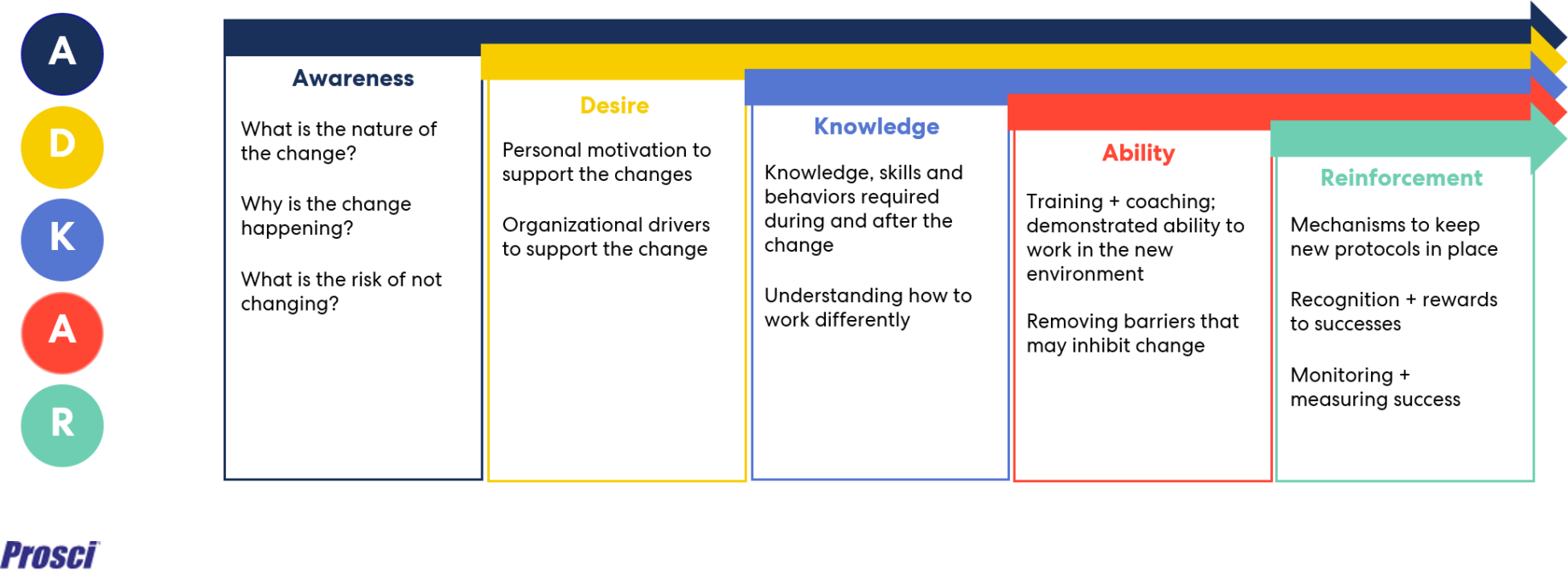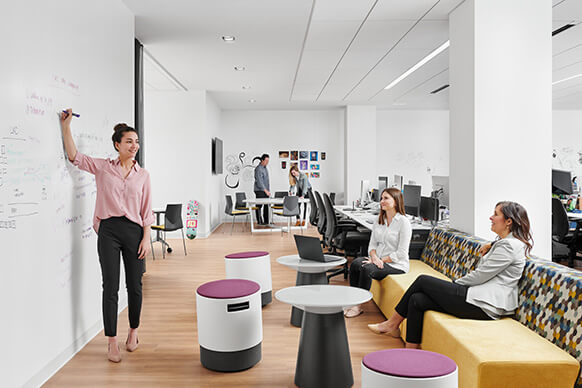Against a backdrop of cycles of infectious outbreaks in various regions across the United States, the WFH experiment continues. Where this year will lead is anyone’s guess, but leaders who manage change can embrace this moment as an opportunity to encourage lasting transformation in how, when and where we work.
Once the risk of contracting the disease lessens—when proven treatments and a vaccination become broadly available—we may see a slide backwards into old norms and attitudes about working from home. If change practitioners prepare ahead of time for this, companies can successfully transform how space in the office is most effectively utilized with larger numbers of employees continuing to work from home one or more days per week.
In the past, WFH was perceived as a benefit or perk for the few and not the many. In recent years, flexible and remote work gained popularity in a variety of industries with the explosion of technology to support it. During this pandemic, however more adept at WFH we may now be, there remains an underlying stigma—the idea that not being seen in the office equals lost opportunities for collaboration and less contact with colleagues, leading to the perception that home working is inferior to being co-located.
During the COVID era, we have collectively stepped up our game in leveraging technology like Teams and Zoom to collaborate with surprising success and productivity. But based on informal conversations with employees about returning to work, ones underscored by our own survey data, what’s missing for employees is informal ad hoc collaboration—the unscripted social moments that are the cultural underpinnings of the office experience.
